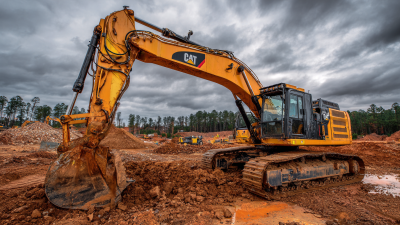Innovative Civil Engineering Solutions Transforming Urban Landscapes for Sustainable Development
As urban populations continue to swell, particularly in developing nations, the demand for sustainable city infrastructures has reached a critical juncture, prompting the need for innovative civil engineering solutions. According to a report by the United Nations, by 2050, nearly 68% of the world’s population is projected to reside in urban areas, generating significant pressure on existing services and resources. This rapid urbanization necessitates a paradigm shift in how we design and build our cities, incorporating more resilient and adaptable frameworks.
 Civil engineering solutions that integrate smart technologies, green materials, and sustainable practices are essential for creating healthier, more livable urban environments. By leveraging data-driven approaches and advanced engineering techniques, cities can not only improve their infrastructure but also enhance their environmental sustainability, thereby promoting a balance between growth and ecological conservation. In this context, innovative civil engineering solutions will play a pivotal role in transforming urban landscapes to meet future demands while ensuring sustainable development.
Civil engineering solutions that integrate smart technologies, green materials, and sustainable practices are essential for creating healthier, more livable urban environments. By leveraging data-driven approaches and advanced engineering techniques, cities can not only improve their infrastructure but also enhance their environmental sustainability, thereby promoting a balance between growth and ecological conservation. In this context, innovative civil engineering solutions will play a pivotal role in transforming urban landscapes to meet future demands while ensuring sustainable development.
Revolutionizing Urban Infrastructure through Smart Technology Integration
The integration of smart technology into urban infrastructure is poised to revolutionize the way cities function, enhancing both efficiency and sustainability. As innovative solutions like Narrowband IoT emerge, they provide unprecedented connectivity and data exchange capabilities, enabling cities to optimize resources, reduce waste, and improve the quality of life for residents. This technology not only transforms traditional city services but also paves the way for more responsive and adaptive urban environments.
In addition to IoT advancements, cities across the globe are implementing smart transportation solutions, such as multiparking systems. These innovations address pressing issues like traffic congestion and air pollution, particularly in rapidly urbanizing regions. The rise of smart city projects emphasizes the need for sustainable practices, focusing on green infrastructure and clean energy to promote urban resilience. Through these initiatives, urban landscapes are being reshaped to support sustainable development, ensuring that future city living is both innovative and environmentally friendly.
Green Roofs and Vertical Gardens: Innovative Solutions for Urban Sustainability
The integration of green roofs and vertical gardens in urban environments is emerging as a transformative approach to sustainable development. These innovative solutions not only enhance the aesthetic appeal of cityscapes but also play a pivotal role in improving air quality and biodiversity. By harnessing natural elements, green roofs help mitigate the urban heat island effect, reduce stormwater runoff, and provide insulation, leading to energy savings for buildings.
Vertical gardens, on the other hand, bring greenery to areas with limited ground space, allowing cities to maximize their flora while fostering community engagement and promoting healthier lifestyles.
Moreover, incorporating these green technologies fosters a sense of connection between urban dwellers and nature, crucial for mental well-being in densely populated areas. Educational initiatives surrounding urban gardening can further encourage residents to engage with their environment, promoting awareness of ecological issues and sustainability practices. As cities continue to grow, the implementation of green roofs and vertical gardens stands as a testament to innovative civil engineering solutions that prioritize ecological balance and enhance the livability of urban spaces for future generations.

Utilizing AI and Data Analytics for Efficient Urban Planning
The integration of artificial intelligence (AI) and data analytics into urban planning is reshaping the way cities are designed and developed. By harnessing the power of AI, urban planners can analyze vast datasets to uncover patterns and trends that inform decision-making. This technology enables the simulation of various urban scenarios, allowing planners to visualize the impact of different design choices on traffic flow, energy consumption, and overall livability. For instance, machine learning algorithms can optimize the placement of green spaces and public transport routes, ensuring a more efficient and sustainable urban infrastructure.
Furthermore, data analytics empowers city officials to engage with citizens more effectively, collecting feedback and preferences through digital platforms. This participatory approach not only enhances community involvement but also ensures that the final urban designs meet the diverse needs of residents. By utilizing real-time data from IoT devices, cities can monitor their environments and adapt quickly to emerging challenges, such as pollution levels or traffic congestion. Ultimately, the fusion of AI and data analytics in urban planning not only transforms our urban landscapes but also paves the way for a more sustainable and resilient future.
Innovative Civil Engineering Solutions Transforming Urban Landscapes for Sustainable Development
| Solution Type | Description | AI/Analytics Utilized | Benefit | Impact on Sustainability |
|---|---|---|---|---|
| Smart Traffic Management | Use of real-time data to optimize traffic flow and reduce congestion. | Machine Learning Algorithms | Reduced travel time and emissions. | Promotes lower carbon footprint. |
| Water Waste Management | Implementation of sensors to monitor water quality and usage. | Data Analytics and Predictive Models | Enhanced resource allocation and waste reduction. | Contributes to sustainable water use. |
| Renewable Energy Integration | Integrating solar and wind energy systems into city infrastructure. | AI Energy Management Systems | Improved energy efficiency and reduced costs. | Fosters a shift to green energy sources. |
| Smart Waste Management | Use of smart bins to optimize waste collection routes. | IoT Sensors and Data Analytics | Cost-effective waste collection and reduced operational costs. | Minimizes landfill impact and enhances recycling. |
Sustainable Water Management Techniques for Modern Cities
Sustainable water management has become a cornerstone of urban development, particularly as cities around the globe grapple with the dual challenges of flooding and water scarcity. According to a report by the United Nations, urban areas are projected to house 68% of the world's population by 2050, leading to increased demand for efficient water use. Innovative techniques such as rainwater harvesting and decentralized wastewater treatment systems are proving essential in addressing these challenges. These methods not only reduce reliance on centralized water supply systems but also promote groundwater recharge, ensuring a sustainable water supply.
Moreover, green infrastructure plays a critical role in modern cities' approach to sustainable water management. The Natural Resources Defense Council (NRDC) highlights that implementing green roofs and permeable pavements can significantly decrease stormwater runoff by up to 90%. These solutions enhance urban landscapes while providing aesthetic value and improving air quality. By integrating sustainable practices into urban planning, cities can effectively tackle the growing pressures on their water resources, fostering resilience in the face of climate change.
Innovative Civil Engineering Solutions Transforming Urban Landscapes for Sustainable Development
Smart Mobility Solutions: Enhancing Urban Transportation Systems
As urban centers continue to expand, the need for innovative transportation solutions becomes increasingly critical. One promising approach is the integration of Smart Mobility Solutions, which leverage advanced technologies such as AI, IoT, and GPS. For instance, the global Mobility as a Service (MaaS) market is projected to grow from $532.76 billion in 2025 to $1.73599 trillion by 2032, with a compound annual growth rate of 18.4%. This exponential growth reflects the transformative potential of these technologies in enhancing urban transportation systems.
A key component of Smart Mobility is traffic management, which utilizes sensors and data analytics to optimize traffic flow and reduce congestion. In cities like Taicang, the implementation of F5G technology has simplified complex traffic intersections, significantly improving the commuting experience for residents. Additionally, parking management systems that utilize RFID and embedded systems can streamline the allocation of parking spaces, making urban travel more efficient.
Tips: To effectively navigate urban transport, consider using real-time traffic apps that utilize GPS and AI to provide updates about congestion and alternative routes. Moreover, stay informed about upcoming electric and autonomous vehicle technologies, as they are poised to reshape future mobility landscapes. Embracing these advancements can enhance the overall urban living experience, ensuring that cities are not only more connected but also more sustainable.

Related Posts
-

Top Strategies for Maximizing Efficiency with Best Civil Engineering Machines
-

The Ultimate Guide to Discovering the Best Engineering Solutions for Your Business Needs
-

Addressing the Key Challenges in the Performance of Civil Engineering Machines: A Data-Driven Approach
-

The Evolution of Civil Engineering Machines Shaping Tomorrow's Infrastructure
-

Ultimate Guide to Selecting the Best Motor Mechanical Engineering Solutions for Global Buyers
-

How to Optimize Mechanical Manufacturing Efficiency Using Data Analytics Techniques
